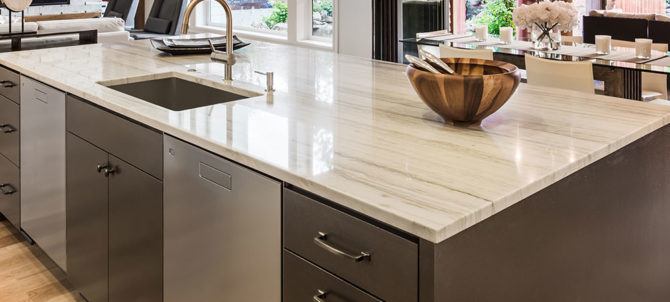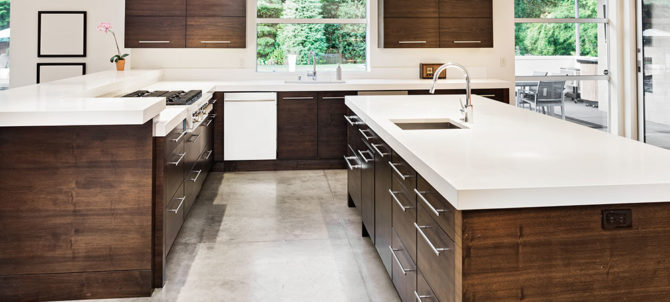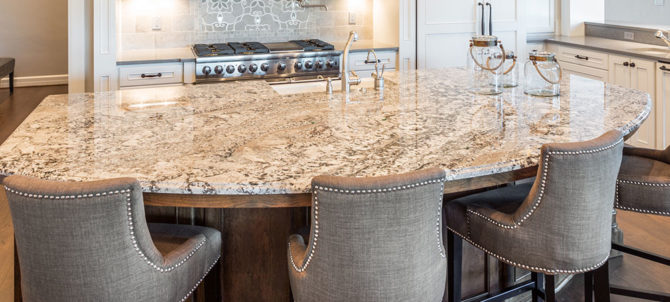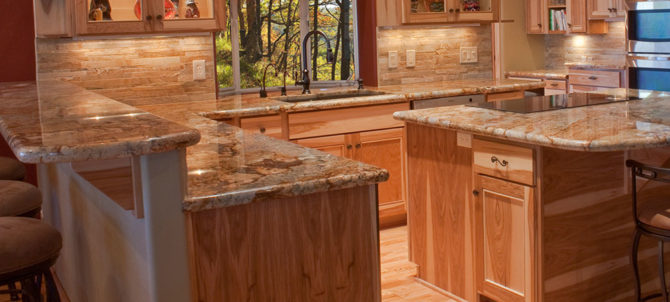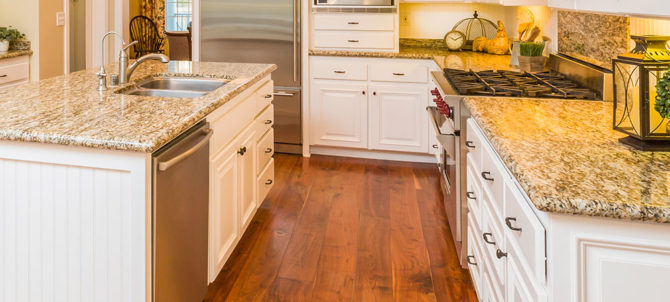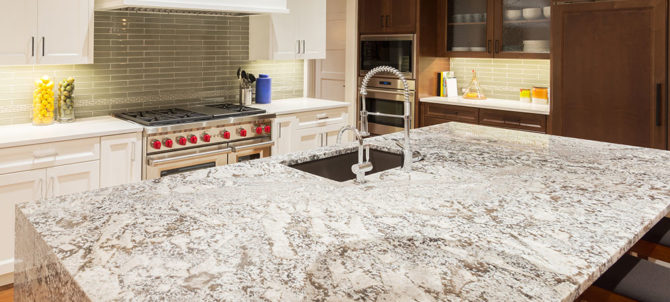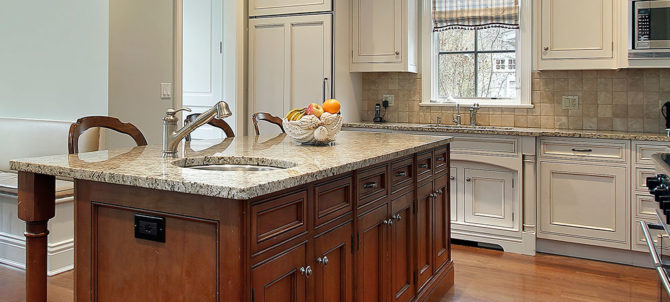
Are you staring at your old, outdated kitchen countertops and wondering how you can redo them without replacing them? Well, you can do many things to make them appear like new or simply give them a great polish.
Some of the things you can do include:
Spray the countertops with spray stone
Granite is a timeless element to add to your countertops, but installation may not always be within your budget. Furthermore, demolishing your present counters might be inconvenient and messy.
If you really want to give your worktops a natural stone appearance but don’t want to undergo demolition or pay the exorbitant price for custom-cut stone, spray stone is a perfect alternative.
Spray stone is available in various colors and finishes, including matte and gloss. The spray stone product range has demonstrated longevity, lasting 15 years with proper care and maintenance.
Remember that you need a polyurethane topcoat to attain the desired level of durability. Failure to do so may result in the coating failing prematurely, causing it to flake and wear unevenly over time.
Spray stone’s application extends beyond countertops. It is also suitable for use on shower and bath enclosures, as well as vanities.
Tile over the countertops
Another strategy is to cover them in tile. First, install a waterproof film on the laminate counters to achieve this. Before beginning this process, plan the tile to ensure proper fitting and appeal.
Also, to avoid unscrewing and replacing plumbing, consider creating an under-mount sink look with sink corners and tile edging trim.
After all tiles have been set and affixed to the counter, you can apply grout. Configuring, cutting, and placing tiles can be time-consuming. To make it easier, hire a professional to help you out.
Redo the countertops with decorative vinyl.
Decorative vinyl is another excellent way to update the kitchen countertop without replacing it. It’s quick and easy, and there is no noise, dust, or odor. This is a great way to go about it if you want to refurbish countertops quickly and affordably.
Refinishing with film involves covering existing surfaces with new material. The sole criterion is that the surface be smooth and clean. Additionally, no water damage or warps should be present. The steps for film application are as follows.
- Make a flat surface with putty and gentle sanding.
- Prime the surface where you need more adhesion, such as corners and edges. You may also need to apply a primer.
- Measure and cut the material.
- Peel and stick the film onto the surface.
- In a fan-shaped sweeping motion, apply the film with a squeegee from top to bottom.
And by doing this, the countertop is ready. Its refurbishing takes only a few hours.
In addition, the vinyl layer replicates the original texture (whether it is wood, metal, or something else), so refinished worktops will be as appealing as natural ones. Furthermore, we guarantee that countertops will maintain their appearance for at least ten years.
Use craft paper
Another innovative way to remake your countertops without replacing them is to use craft paper. This procedure can take the longest to complete, so bear this in mind before beginning.
To cover the countertops using craft paper:
- Remove the border from Formica countertops. If the edges are rounded, you must paper them over and smooth them to the bottom edge.
- Soak craft paper with two parts water and one part glue, then smooth it onto the counters and over the edges.
- If necessary, cut the paper around the wall and bottom edges. Keep adding until you achieve the desired effect.
- Once it has dried, add the color.
- Apply a few polyurethane coatings, smooth it out, and attach a one-inch stained edge piece.
- Add more layers of polyurethane.
- Due to the drying period of polyurethane coats, it will be ready to use in approximately 2-3 days.
Paint the countertops marble.
If new counters are not within your budget, we have found another option: a paint makeover. You should note that this is not your typical simple paint color. This is a new, exciting way to paint your countertops like marble.
You should start with sanding, priming, and painting the surface white.
Once the countertops are ready, you can begin to create veins using craft paint. You should practice veining on a tiny piece of wood before moving on to the counter.
You should then whitewash the surface before sealing to soften the veins. Once you are done, seal your artificial marble.
You should note that when doing this, you’ll also need primer, eggshell or satin-finish white paint, three colors of gray craft paint, a foam roller and a roller tray, a feather, a sea sponge, a soft paintbrush, paper towels, a toothbrush, small mixing bowls, sandpaper, paste wax or a water-based polyurethane for the topcoat, and other supplies.
You can also buy a paint kit to change the appearance of your countertops. If painting artificial marble sounds too demanding, consider using a marble interior film.
Refinish the countertops with terrazzo.
Terrazzo countertops are resilient and resistant to scratches, stains, and chipping, making them ideal for high-traffic areas. They are also bacteria-resistant and simple to clean, making them ideal for kitchens where hygiene is a priority.
While terrazzo is a good option, it takes a lot of time, and some people report that their countertops look like their floors, which they don’t like.
How wise is it to redo the countertops on your own?
Remember that getting your countertops professionally redone is always the best way out. Industrial coatings require knowledge and high-end equipment, such as an HVLP sprayer, respiratory protection equipment, and a fume exhaust system.
Without adequate safety equipment, resurfacing your countertops alone can be extremely dangerous to your health.
If you need assistance or have questions, don’t hesitate to get in touch with a local countertop refinishing professional experienced in giving faux granite countertops Raleigh or any other look.
Do not attempt this technique alone unless you are qualified to do so.
